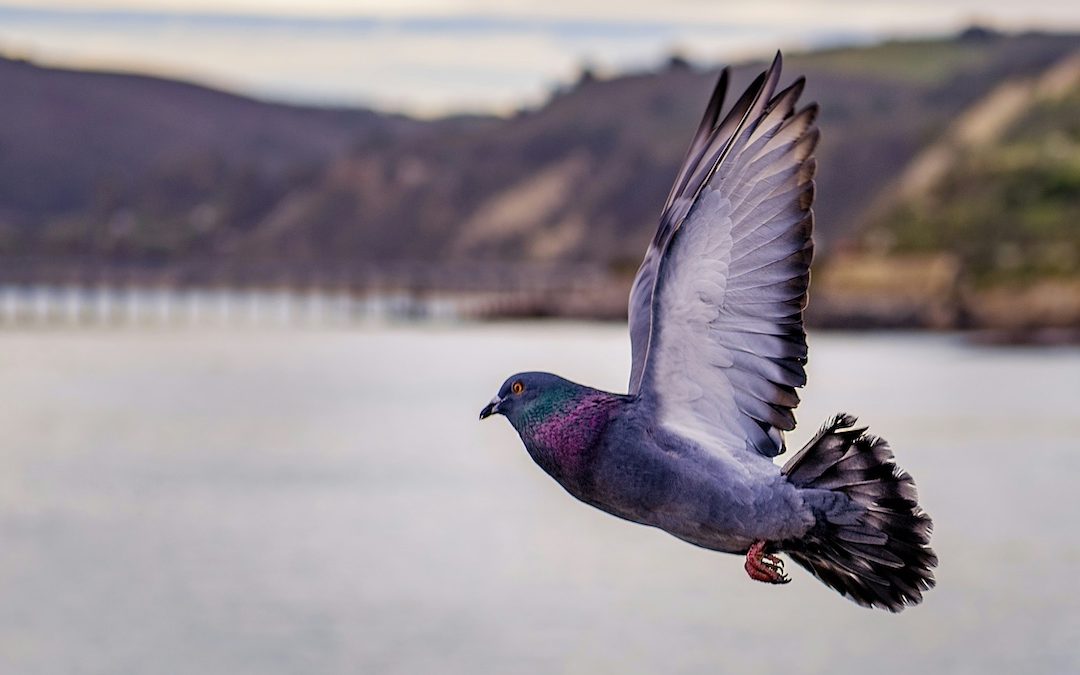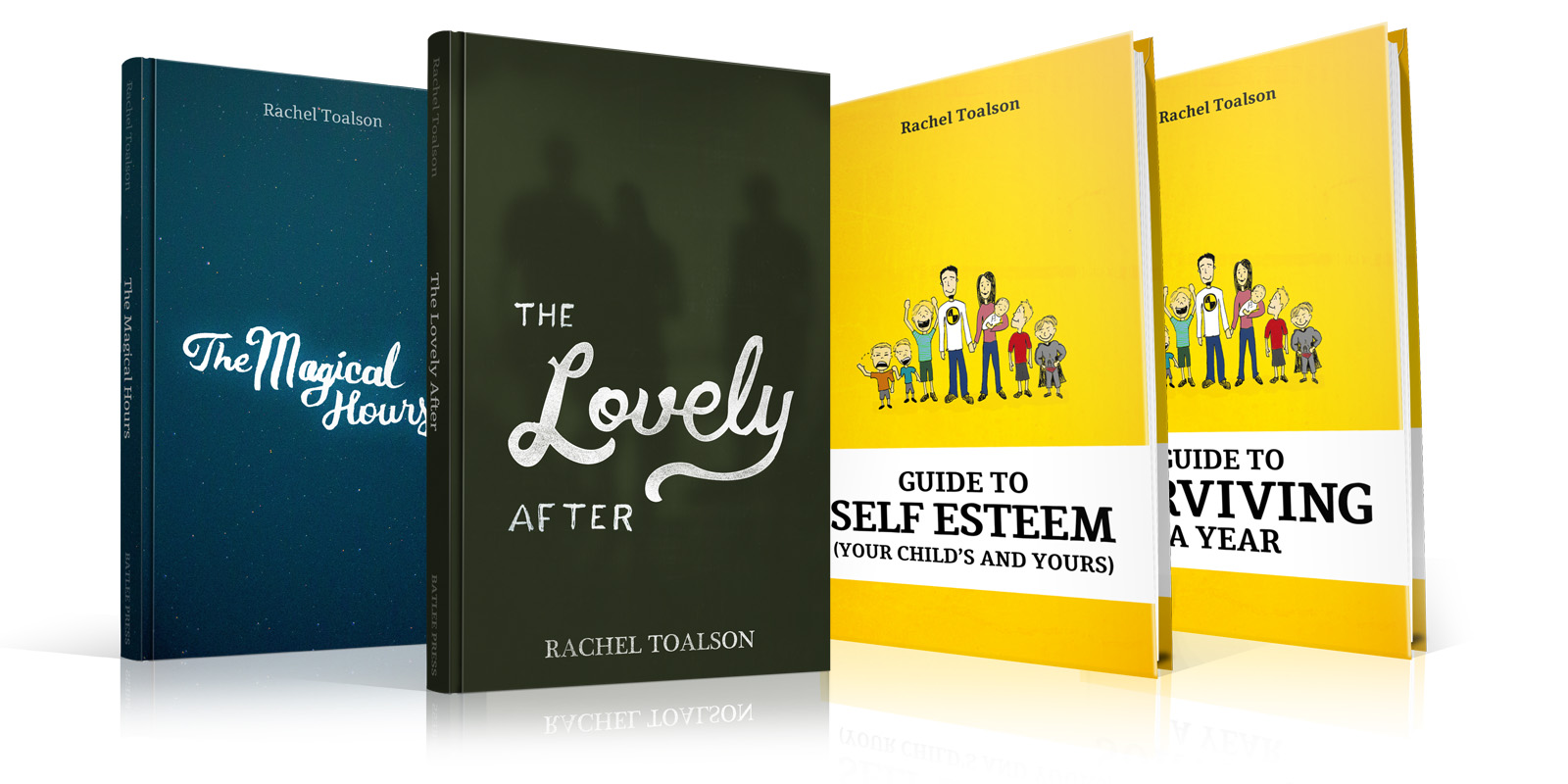
by Rachel Toalson | Books
Here are 6 things worth sharing this month:
1. Reading (YA): I just finished Joy McCullough’s latest YA book, Enter the Body, which was a retelling-ish story that featured the females of Shakespeare’s most iconic tragedies. Written in verse and also at points scripted like a play, this book was not only a fast read but a fascinating one. Who doesn’t want to hear from the females who were abused, mistreated, and always seemed to die one way or another in Shakespeare’s tragedies? (Full disclaimer: I studied Shakespeare in college and have enough credits to be a Shakespeare professor and, for about a year, entertained the idea of becoming one. So she had me at Shakespeare.) McCullough is also the author of We Are the Ashes, We Are the Fire (not in verse), and Blood Water Paint (another verse novel) as well as books for middle graders.
2. Reading (Adult NF): “It’s about moving through the world with curiosity about what will happen next, instead of a demand that it turn out according to your plans.” Oooh, this was a hard read for me. Four Thousand Weeks: Time Management for Mortals, by Oliver Burkeman, is a book about using what time we have on this earth realistically, rather than more efficiently. It’s a philosophical book about time, with some great pointers for how to come to terms with the limited time we have. I loved it and hated it and loved it. I ended on loving it. But will probably have to read it again the next time I think, “No, I think I can get all of this done.” Very highly recommended. Burkeman is also the author of The Antidote: Happiness for People Who Can’t Stand Positive Thinking, which I haven’t read, but because I loved Burkeman’s style, I’ve now added it to my TBR.
3. Reading (Adult NF): An important, fascinating, completely engrossing read: that’s how I’d describe The Six: The Untold Story of America’s First Women Astronauts, by Loren Grush. This book tells the story of the six elite women who were chosen in 1978 to become NASA’s first female astronauts: Sally Ride, Judy Resnik, Anna Fisher, Kathy Sullivan, Shannon Lucid, and Rhea Seddon. I thoroughly enjoyed reading about their lives, how they came into science, and the advances in space travel during those important decades. (A personal tidbit: when I was a senior in high school, eight students from my school were chosen to go through an abbreviated astronaut training at NASA Space Center Houston. I got to fly on the vomit comet (a training jet) and fly the rover my team built in zero G simulation. I’m currently trying to write a graphic memoir about this experience. This book was like nerding out on all things space.)
4. Watching: Something you may not know about me is that I am a sucker for anything that is based on a true story. So when I saw The New Look, an Apple TV series based on how French fashion icons Christian Dior, Coco Chanel, Pierre Balmain, and Cristóbal Balenciaga survived World War II and navigated the aftermath by launching what’s considered to be modern fashion, I had to watch it. And it is FANTASTIC. So beautifully filmed with stellar acting. And have I mentioned Apple TV’s intros for their shows? They’re so creative! You’ll want to check this one out if you love true stories, too.
5. Reading (YA): I’ve been all about the young adult reads this month, and another fantastic one to add to your list is Forget Me Not, by Alyson Derrick. Oh my goodness. So many tears in this one. I was reading it in the car on the way to a family fun day at a museum here in San Antonio and my kids noticed my tears and said, “Why are you crying?” And I said, “Because it’s just so beautiful.” Don’t you just love books that make you feel that way? Well, this one will. Forget Me Not, was longlisted for the 2023 National Book Award. Derrick is also the co-author of the book, She Gets the Girl, which I have not read.
6. Reading (Adult F): I loved A Grandmother Begins the Story, by Michelle Porter. It’s about four generations of Native (Métis) women, as well as other characters (including a buffalo…you’ll have to read it to understand) , and how they navigate their lives outside of each other. It had all kinds of lore and the feel of old storytelling, which is what I enjoyed so much about it. The book has gotten mixed reviews, but for what it’s worth, I really enjoyed it. And the cover! So lovely!

by Rachel Toalson | Wing Chair Musings
Battles are not my favorite.
My first teenager fought his father and me about every little tiny thing; he had an endless energy to fight, it seemed, and it wore my husband and me down.
Fortunately, the next teenager who came along was a laid-back, delightful kid. We regrouped.
I have another new teenager in my house (yes, if you’re keeping track, that’s three teenagers in my house). He is quiet, respectful, content to fade into the background, so long as he has his friends, a soccer ball, and Pokémon Go.
And then there are two preteens who are as challenging as the first child was. They LOVE to fight. It is so much fun to argue about everything! Can you go a day without fighting? I say to them regularly. No, they answer at the exact same time. (They’re identical twins. They have twin powers.)
Every day, it seems, there’s some kind of battle. I’m tired. We’re all tired. No one wins when they come out swinging all the time.
In the larger sense, life, too, can feel like a series of battles. Conflict layers upon conflict, which layers upon conflict, which layers upon…on and on it goes. From the time we’re young life lays out a series of gauntlets. Challenges for us to overcome. Difficult people love. An identity to try to hold onto when things get dicey.
There are so many places where fighting exists, people and the world throwing out challenges like they’re nothing. What do you think about this—and this—and this this this this this?
If all we ever do is fight, what kind of a life is that? An exhausting one.
I’ve been kickboxing for several years. Kickboxing teaches you how to fight. You use strategic kicks and punches. But you also learn how to duck and block—which is just as important in the art of fighting. Sometimes a fight is about outlasting your opponent, sometimes it’s about the element of surprise, sometimes it’s simply about dodging and blocking and being patient. Waiting for the right time to come out swinging. It’s important to learn how to fight smarter.
What does it mean to fight smarter, though?
Well, for one, we have to choose our battles. We can’t fight every one. We have to trust that other people are fighting, too.
I have a few more suggestions for fighting smarter below.
I suppose what I really want to say in this somewhat meandering examination is that our lives are a grand story. The conflict, the fighting for what we want and need, is what makes for a good life story.
It’s not easy to remember in the midst of conflict or challenge, those places where we have to fight hard to get through, that these are the defining moments of our lives, or that our overcoming will make a good life story. It’s not much of a comfort when we’re going through it (though sometimes it can be).
But it’s a way of turning our attitudes and beliefs around, which we talked about in the last newsletter.
What if we saw the conflicts in our lives as opportunities to grow? Just like a character in a story, we don’t become who we truly are and were made to be until we fight for something. Until we learn what we’re willing to fight for.
And becoming is circular, isn’t it? So we also learn more about what we want and need to fight for the more we become who we are. We peel off all the layers covering our true selves and unfold more into who we are as we fight for what matters.
(A note here: Of course we don’t pick fights about things that don’t matter. That’s not what I’m saying at all. How exhausting that is! We fight for what does matter. And each of us has to decide what that is for us. Love. Worth. Dignity. Equality. Belief in myself. A place at the table. A place for everyone at the table. Those are some of the things that matter to me.)
I want to fight fierce for the things that matter. But what does fierce mean? Sometimes it means speaking up, sometimes it means staying silent. Sometimes it means speaking our minds to a whole big wide world, and sometimes it means gathering the right people around us—or joining the right people—so they can speak to the big whole wide world. My fierce may look different than your fierce.
When I was at the Texas Library Association, a group of authors, librarians and attorneys met to discuss what was happening with book bans in Texas. There are some amazing people in this group doing amazing things to fight against book bans. They are becoming more of who they are. They are becoming alive.
That’s what happens when we fight for the things that matter.
Here are some things I like to remember when I’m fighting:
1. We can’t fight for everything.
We have to find our corner. There’s so much in the world we want to change—that needs to change—but we can’t do it all. We have to choose our battles and trust that other people are fighting for what matters, too.
And just because we’re fighting for one thing doesn’t mean we don’t care about the other things. We’re just picking our corner—because when we fight for too many things we’re stretched too thin and can’t be effective at any of them.
2. We have to take care of ourselves.
Fighting is hard work and takes a lot of energy. Just like I can’t train in kickboxing every day without injuring myself—I need at least one recovery day on the calendar—we can’t fight every day of our lives without recovery days. So take time away and make sure you’re caring for yourself.
3. Sometimes fighting is quiet.
We’re not all cut out to be loud. We fight in our own ways. We can fight with our pen, in the privacy of our room, as much as we can fight out in the world. Anonymous still has a powerful voice.

by Rachel Toalson | This Writer Life
The first book I wrote I didn’t brainstorm. I flew by the seat of my pants. The second book was the same. Both took months of revision to get them in submission shape.
After those first two books I created a brainstorm document for myself. I thought I could use it for every book thereafter. My secret formula for writing a book.
I tried using the brainstorm document on the next book. Nothing worked. I felt completely helpless. I thought, How do you write a book?
That question creeps in every book I begin, no matter how many books I’ve written.
Maybe that’s discouraging to hear from someone who’s written more than 40 books. I don’t mean it to be. I think it’s actually kind of exciting. There’s this interesting thing called the knowledge gap that says the more we know and learn, the more we realize we need to know and learn. This keeps our minds open to new possibilities.
So when we’re faced with the question, Uhhh….how do you write a book again? our minds are primed to focus on developing our craft and making it easier for us. Making storytelling something intuitive instead of something we have to consciously think about endlessly.
Continuous learning is what brings us into expert territory. When we realize we don’t know what we’re doing, we approach each book as though it’s all brand new. Our books don’t become formulaic because most of the time we can’t use the exact same method of brainstorming and writing and revising for every single book.
I take some of the pieces from that brainstorm document I created and use them here and there, but every book is different. That’s what makes writing exciting. It’s also what keeps us pushing to learn more about our craft.
None of us really knows what we’re doing—and that can be liberating. Because we all have room for improvement. And that means we can really engage with our stories, instead of going through the motions and becoming, for lack of a better word, robotic at it.
When we’re learning something new, or learning more about it, we play closer attention to it. When we think we already know everything we need to know, our minds close up tight against new ideas that challenge what we think we know.
Creativity is best expressed through an open mind.
So when we face that blank page and we have no idea where to begin, we don’t have to feel stuck or get down on ourselves for not knowing exactly what to do next. It’s all a part of the grand process. Author Sue Grafton keeps journals for books she’s written. And whenever she starts a new book, she says she can always peek back at those journals and “discover I was just as confused and befuddled back then as I am today. Prior journals are reminders that regardless of past struggles, I did somehow manage to prevail.”
Here’s how to embrace the reality that every book is different:
1. Let the story lead.
Even when writing a series I have a slightly different method for each book (it’s worth noting that the differences aren’t always drastic). I thought I’d start my recent middle grade horror story (book 4 of the series) with the ghosts and flesh out their backstory before beginning on the plot. That wasn’t what the story wanted. So I jotted down some plot points, then dove deeper into the characters and ghosts.
I like to know the tone of a story and the voice of a character before I start writing. But in a recent story draft (another middle grade), I’ve just been clearing my throat. I know I’ll need to go back and probably cut several chapters from the beginning, but it’s what the story needed at the time. I followed its lead.
And that’s what a first draft is for: discovering the story. Sometimes it takes a while to find our way.
Some stories want extensive brainstorms. Some want to be told in a linear way. Some want us to focus all our energies on a particular cast of characters before we do anything else. Some don’t ask for any of that.
Don’t miss out on what the story has to tell you, however confounding and out of your comfort zone it may be.
2. Embrace the not-knowing.
I’m one of those people who hates not knowing anything—so this point is especially hard for me.
The truth is, most of us intuitively know how to tell a good story. We’ve been doing it since we were young. We might not get it right on the first try—but no one really does.
Not knowing how to do something makes us uncomfortable. It also makes us more willing to consider new ways to write and encourages us to learn more about storytelling and craft. If we embrace the unknown, we leave our minds open instead of closed. Creativity can have a field day with an open mind.
3. Remember that when we’re challenged we grow.
If writing were easy all the time, if we constantly knew what we were doing, it would not only get pretty boring but we would also cease to grow. We might stagnate. Our creativity and stories might stagnate.
No one wants to tell or read the same story over and over and over again. Formulas get boring for writers and readers.
Challenges can be frustrating and hard—but we become better writers—and people—by working our way through them.
Never stop growing. Keep embracing the mystery. Know what you don’t know and use it to your advantage.
I hope you have a stupendous month of creativity and joy.

by Rachel Toalson | Books
Here are five things worth sharing this month:
1. Reading (MG): I’ve been a fan of Sally J. Pla’s for a while, so when I saw she had a new book, I couldn’t wait to pick it up. The Fire, the Water, and Maudie McGinn is a sweet story about a girl on the autism spectrum who’s been displaced because of a California fire. It’s a difficult story, but it’ll leave you feeling a lot of hope—one of the things I love most about middle grade literature. Pla is also the author of one of my favorite books, The Someday Birds, which I also highly recommend.
2. Reading (Adult NF): “If people had more understanding of geologic time, we’d be less selfish and greedy, and think about the future.” I love Sy Montgomery. Her newest book, Of Time and Turtles: Mending the World, Shell by Shattered Shell, is as brilliant as the first book of hers I read (The Soul of an Octopus: A Surprising Exploration Into the Wonder of Consciousness, which was a National Book Award finalist). This one’s about turtles and time and the environment and shrinking habitats and COVID and what we can do about it all. It was brilliant.
3. Watching: You’re gonna have to excuse me for a second, but I have to gush about a new Apple TV series, The Buccaneers. Have you seen this show?! It’s SO GOOD! They’ve only released the first season (and watch out—it ends on some cliffhangers), but I’ve found myself thinking about the characters frequently, after having finished all the episodes. That’s how I know it’s a good show—I’m invested in the characters, I care about their lives, and I want to know more. It’s a historical show that follows a cast of young women as they try to find their place in the world—or make it. I’ve written down so many quotes from the young women; here’s one of my favorites, from Nan St. George: “I will not be a caged bird. I will fly free.”
4. Reading (YA): I recently finished the young adult book, An Appetite for Miracles, by Laekan Zea Kemp, a novel in verse about family and dementia and memory and first love and hope. Kemp wrote not only a beautiful story but beautiful poetry. This is the first of Kemp’s books I’ve read—but it will not be the last!
5. Reading (MG): I am beginning to fall in love with Gary D. Schmidt’s stories. I just finished Okay for Now, which was a National Book Award finalist back in 2011, and I loved it as much as I’ve loved his other books. He has a knack for writing complex characters who don’t always make good choices—but you love them all the more for it. Other favorites of Schmidt’s include The Labors of Hercules Beal, The Wednesday Wars, and Just Like That.

by Rachel Toalson | Wing Chair Musings
I have always been a person of action.
It’s good to sit around and dream and talk about what we want to do. My husband and I have regular dream sessions, in which we dream about where we want to be in the future. We write things down and make seemingly impossible plans and grab hope with both hands because sometimes it’s what you have to do.
But what good is dreaming if we don’t act on those dreams?
We have to do something. We have to take the steps necessary to achieve our dream. We have to identify those necessary steps.
So many people tell me they want to write a book. But either they never get started or they abandon it before it’s done. They’re in good company. Some experts estimate that about 97 percent of people who start a book don’t finish it. And that’s only accounting for the people who actually get started on a book in the first place.
Action is what gets the book written. We have to make a plan to do it—and then do it.
It sounds so simple, but doing the work is how a book gets written.
Lennox Lewis, an English Canadian boxer, says, “Action is what separates the dreamers from the doers.” We have to act on our dreams to make them realities.
I will admit: There are hundreds of things that get in the way, that make it hard to do the work—and many times we’ll have to choose between one good thing and another. But when something is important to us, we find the time to do it.
Getting your butt in the chair and doing the work of writing is the most important thing if you want to write a book. Here are my suggestions for how to do that:
1. Have a chair.
What I mean by that is carve out a space—both physical and metaphorical—for writing. Writers do need a space where they can be alone (or mostly alone) and create. We also need a special space in our schedule. Writing takes time—which means we have to give it time.
It helps me to use the same time every day for my writing. That predictability helps me stay consistent with my writing. But I know that doesn’t work for everyone.
Maybe it’s as much as saying, I’ll write for fifteen minutes every day, and then look for the time to do it.
Making this space in your physical space (your calendar and your home) and your mental space (your mind) signals to your brain that writing is important. And when the brain notices anything is important, it works harder at it—which is what we want.
2. Be consistent and make writing a habit.
Life happens. Habits, at least the good ones, are challenging to form. As soon as we decide we want to develop a habit, a thousand things pull our attention to exactly the opposite.
It may be challenging at first to stick with writing every day, to not get bored after the initial excitement wears off. But if we show up every day—or most days—it gets easier. You can trick yourself, too, by rewarding yourself for showing up consistently.
There are all kinds of books out there that teach about building habits. Thinking of writing as a habit can certainly be a first step toward a consistent practice. And when we reward ourselves for that consistency, the brain associates the act with pleasure. And it says, This is fun. I want to do it again!
Which is exactly what we want the brain to do.
3. Allow room for terrible writing.
Just like with any other habit, we won’t feel like writing every day.
I run every day but Sunday. And some mornings I peel myself out of bed and think, I really don’t feel like running this morning. I do it anyway. I may not enjoy it, but it’s good for me. And it gets easier once I get started.
Some runs are slogs. Some mornings I haven’t gotten enough sleep or I’m a little burned out. Some days the writing is a slog. I have other things on my mind, or I can’t focus or the writing’s just off. I remind myself not every run can be awesome, and not every writing session can be awesome.
Some days we’ll write terribly or we won’t get many words. But there’s always tomorrow. And the next day and the next.
And that’s the hope when it’s a writing habit: we’ll do it every day—and tomorrow can turn the whole thing around.
One of my writing mantras is, “You can’t revise what doesn’t exist.” So carve out space, build your writing habit, and make no judgements—yet.
Writing a terrible something is better than writing nothing.
I hope you have a marvelous month of writing.






